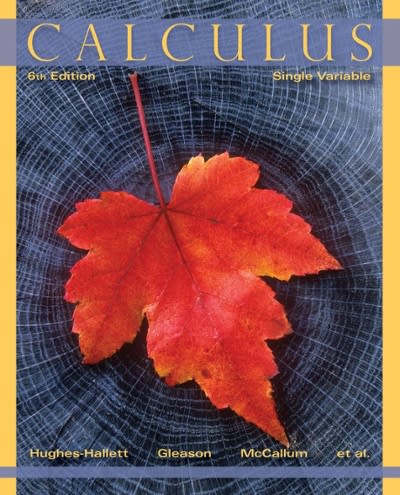Question
In Unit 3 we learned about discrete probability distributions: Hypergeometric, Binomial, and Poisson. In Unit 4, we added the Normal distribution to our list as
In Unit 3 we learned about discrete probability distributions: Hypergeometric, Binomial, and Poisson. In Unit 4, we added the Normal distribution to our list as the first of many continuous distributions. In this unit, we are adding those other continuous probability distributions. We are seeing that the Exponential, Gamma, Weibull, Lognormal, and Beta distributions are appropriate to certain types of engineering problems. Althoughour readings have tended to focus the most attention on the Normal distributions, we need to recognize that to solve a particular engineering challenge, any of these distributions might be needed. We need to be able to determine which, if any, of these distributions fits any situation in which we might be doing analysis.
We use aprobability plotas a tool to determine if a set of data we are analyzing can reasonably be described by one of our probability distributions. I so, then the standard probabilities associated with the distribution can be used to make predictions about the process or system represented by our data. If not, we have to do some extra math to determine our own probabilities by fitting the data we have to an algebraic function (something we'll do when we get to linear and nonlinear regression) and then integrating that function over our range of interest to determine probabilities. The math isn't that difficult once we know the function, but it is certainly faster and easier to do our work if we can quickly show that one of the distributions we already understand fits our data well enough to use it.
Discuss how a probability plot works, and why we can draw conclusions based on the level of the fit we see. If the resulting "fit" isn't perfect (which it very rarely is), what factors do you need to consider in making a decision about whether to use a particular distribution to solve your challenge? Describe how you would go about determining the best distribution for a set of data (if there actually is one).
Step by Step Solution
There are 3 Steps involved in it
Step: 1

Get Instant Access to Expert-Tailored Solutions
See step-by-step solutions with expert insights and AI powered tools for academic success
Step: 2

Step: 3

Ace Your Homework with AI
Get the answers you need in no time with our AI-driven, step-by-step assistance
Get Started


